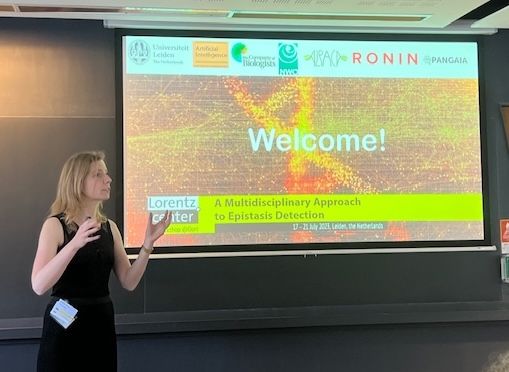We co-led a consortium of international researchers in drafting a manifesto to uncover some of the unexplained features in our genome.
Genetic epistasis refers to the changes in the effect on phenotype of a gene or variant, dependant on the context of other genes or variants. Put simply, epistasis is the interactions between genes and variants in the genome.
Genetic epistasis and non-linear relationships are likely involved in the problem of ‘missing heritability’, which is widespread in genome wide association studies and complex disease phenotypes. As such, epistasis is a growing interest area for the global genetics community.
With the growth of artificial intelligence (AI)/machine learning (ML) technologies and compute capabilities our ability to solve some of the primary challenges in the field of epistasis is increasing.
In July 2023, Drs’ Natalie Twine and Letitia Sng from the Transformational Bioinformatics group at CSIRO co-organised a week-long workshop titled, ‘A multidisciplinary approach to epistasis detection’ at the Lorentz Centre, in Leiden Netherlands. Co-organisers included international leaders in genetics and epistasis, Dr Jonathan Cooper-Knock (Sheffield University), Dr Marleen Balvert (Tilburg University), Alexander Schoenhuth (Bielefeld University) and Prof Michael Snyder (Stanford University).

The workshop was a truly interdisciplinary and international event, with 41 attendees from across Europe, UK, US and Australia. Activities involved presentations from attendees, vibrant discussions on different aspects of genetic epistasis and co-drafting of a review paper on the topic of detection approaches to epistasis, which was subsequently published in Genome Biology. The paper identifies challenges that need to be addressed to advance the detection of epistasis. Key amongst these challenges are the potential and limitations of existing statistical and mathematical approaches as well as the importance of accounting for population structure. The paper also explores biological observations of epistasis and builds a use-case for a database of epistasis as a much-needed resource for researchers to explore and validate epistasis results.
As the field of epistasis grows and our computational approaches to detection advance, this publication will set the groundwork for future researchers to build on. There is so much about the genome and relationships to phenotype that are not well understood, and machine learning has the potential to provide answers. We look forward to the impacts these non-linear approaches to genome analysis on solving some of the problems of human disease.
References
Balvert et al. Considerations in the search for epistasis. Genome Biology November 2024. DOI: 10.1186/s13059-024-03427-z


